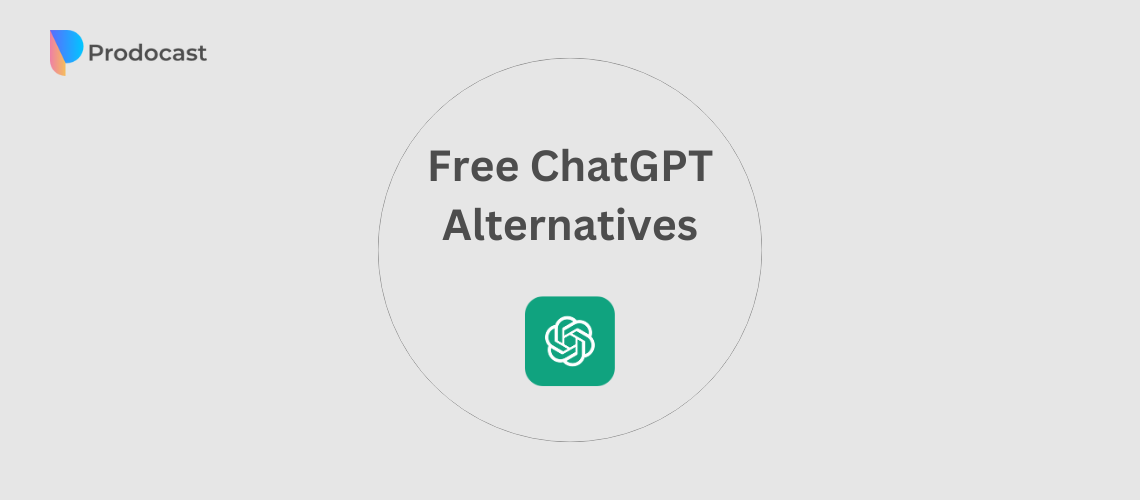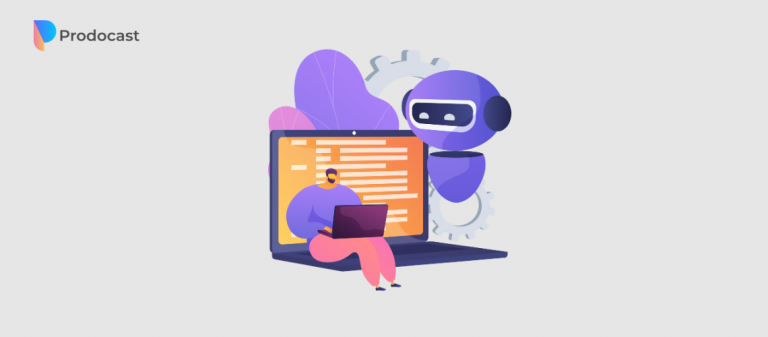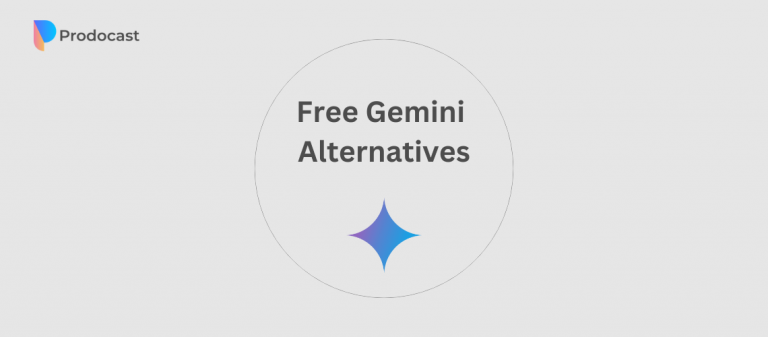Introduction
In the realm of artificial intelligence, ChatGPT by OpenAI has emerged as a powerful tool, widely recognized for its versatility in generating human-like text and assisting with a variety of tasks. From content creation to coding assistance, ChatGPT has revolutionized the way professionals and enthusiasts leverage AI for enhanced productivity. However, with the rising demand for AI-driven solutions, there is an increasing need for accessible and cost-effective alternatives, especially those that offer free or freemium plans.
This blog post aims to serve as a comprehensive resource for content creators, writers, researchers, developers, and professionals seeking to harness the power of AI without incurring high costs. We’ll explore the top 10 free alternatives to ChatGPT, highlighting their key functionalities, strengths, and specific use cases across various applications. Our criteria for selecting these tools include user-friendliness, range of applications, and reputation within the AI community. Let’s dive into the world of free AI tools that can elevate your workflow and productivity.
Unveiling the Power of Free AI: Top 10 Alternatives
1. Chatsonic (Writesonic)
Chatsonic, developed by Writesonic, is an advanced AI tool tailored for both content creation and conversational tasks. It leverages the latest advancements in natural language processing (NLP) to generate highly accurate and human-like text. The platform is designed with user-friendliness in mind, making it accessible to both beginners and experienced users.
Chatsonic excels at generating content for blogs, articles, and social media, providing a robust solution for writers looking to enhance their productivity.
Additionally, it can be used to create interactive chatbots for customer support, delivering engaging and context-aware responses. While the free plan offers substantial features, it does come with usage caps and limited access to more advanced functionalities available in premium plans.
Key Features:
- Natural Language Processing (NLP): Generates human-like text with high accuracy.
- Content Generation: Ideal for blog posts, articles, and social media content.
- Conversational AI: Can be used for customer support and interactive chatbots.
Use Cases:
- Blogging: Generate blog post intros, product descriptions, and social media captions.
- Customer Support: Create chatbots that provide instant, accurate responses to common inquiries.
Pros:
- Highly accurate text generation.
- Versatile in content creation and conversational tasks.
- User-friendly interface.
Cons:
- Usage caps.
- Limited advanced features.
2. Gemini (Google AI)
Gemini is a sophisticated AI tool from Google AI, designed to provide robust content creation and conversational capabilities. Leveraging Google’s extensive research in machine learning, Gemini excels at producing accurate and contextually relevant text. This tool is versatile and suitable for a wide range of applications from writing and summarization to conversational interfaces.
One of Gemini’s key strengths is its seamless integration with other Google services, making it an excellent choice for users already embedded in the Google ecosystem. Despite its powerful capabilities, the free tier of Gemini may have some limitations in terms of usage volume and access to certain premium features, which might require a subscription for full utilization.
Key Features:
- Advanced Algorithms: Utilizes Google’s robust AI and ML technologies.
- Versatile Applications: Suitable for writing, summarization, and conversation.
- Integration: Easily integrates with other Google services.
Use Cases:
- Research: Summarize academic papers, and extract key insights from lengthy articles.
- Content Creation: Generate outlines and drafts for blog posts and articles.
Pros:
- Powerful AI algorithms.
- Seamless integration with Google services.
- Versatile applications.
Cons:
- Usage limitations.
- Limited premium features.
Bouns Read: Gemini vs. ChatGPT: A Comprehensive Comparison
3. BlenderBot 3 (Meta)
BlenderBot 3, developed by Meta (formerly Facebook), is an open-source conversational AI designed to engage users in natural and informative dialogues. As an advanced chatbot, BlenderBot 3 can handle a wide range of conversational topics, delivering responses that are contextually relevant and engaging.
One of its standout features is its customizability, allowing developers to adjust parameters and personalize interactions to suit specific needs. Being an open-source tool, it benefits from continuous improvements and contributions from the AI community. However, deploying and customizing BlenderBot 3 may require a certain level of technical expertise, which could be a barrier for non-technical users.
Key Features:
- Engaging Conversations: Generates natural and context-aware responses.
- Customization: Offers adjustable parameters for personalized interactions.
- Open-Source: Community-driven improvements and updates.
Use Cases:
- Chatbots: Develop chatbots for websites to handle customer inquiries.
- Virtual Assistants: Create personal assistants that manage tasks and provide reminders.
Pros:
- Engaging and context-aware conversations.
- Highly customizable.
- Open-source with community support.
Cons:
- Requires technical knowledge for customization.
- Limited features.
4. Rytr
Rytr is a versatile AI writing assistant that supports multiple languages and adapts to various writing styles. It is designed to help users create high-quality content quickly and efficiently, making it an excellent tool for bloggers, marketers, and multilingual writers.
Rytr’s user-friendly interface and straightforward functionality ensure that users can start generating content with minimal effort. The platform excels at producing diverse types of content, from blog posts and marketing copy to social media updates.
However, the free plan includes a limited number of characters per month, which may not be sufficient for heavy users or those needing extensive content creation.
Key Features:
- Multiple Languages: Supports content creation in various languages.
- Diverse Writing Styles: Adapts to different tones and styles.
- User-Friendly Interface: Simple and intuitive design.
Use Cases:
- Blogging: Craft blog post drafts, and generate catchy headlines.
- Marketing: Develop marketing copy, and create engaging social media posts.
Pros:
- Supports multiple languages.
- Diverse writing styles.
- Easy to use.
Cons:
- Limited characters per month.
- Struggles with complexity.
5. Amazon CodeWhisperer
Amazon CodeWhisperer is an AI-powered coding assistant designed to help developers write code faster and with fewer errors. It offers real-time suggestions and code completions, making it an invaluable tool for software development and debugging.
CodeWhisperer integrates seamlessly with popular coding environments, providing context-aware code snippets that help reduce development time and improve code quality.
While it is highly effective at streamlining coding tasks, the free tier offers limited access to some advanced features, which may necessitate a subscription for extensive use. Nevertheless, it remains a powerful assistant for developers looking to enhance their coding efficiency.
Key Features:
- Real-Time Suggestions: Provides code snippets and recommendations.
- Error Reduction: Helps identify and fix coding errors.
- Integration: Works seamlessly with popular coding environments.
Use Cases:
- Software Development: Get instant code completions, and find bugs in real time.
- Debugging: Receive suggestions to fix common coding errors quickly.
Pros:
- Real-time code suggestions.
- Helps reduce coding errors.
- Integrates well with coding environments.
Cons:
- Limited access on the free tier.
- Not all languages are supported.
6. GitHub Copilot (Limited Free Tier)
GitHub Copilot, powered by OpenAI Codex, is an AI tool designed to assist developers by providing code suggestions and automating repetitive tasks. It integrates directly with Visual Studio Code and other popular integrated development environments (IDEs), making it easy to incorporate into existing workflows.
Copilot offers relevant code completions, snippets, and even entire functions, significantly speeding up the coding process and reducing errors. While the free tier provides access to some basic functionalities, full access to Copilot’s capabilities requires a subscription. Despite this limitation, Copilot remains a highly valuable tool for improving coding efficiency and productivity.
Key Features:
- Code Suggestions: Offers relevant code completions and snippets.
- Automation: Streamlines repetitive coding tasks.
- Integration: Compatible with Visual Studio Code and other IDEs.
Use Cases:
- Programming: Automatically complete code, and generate entire functions.
- Code Review: Receive suggestions for optimizing code during reviews.
Pros:
- Provides relevant code suggestions.
- Automates repetitive tasks.
- Integrates with popular IDEs.
Cons:
- Limited functionality.
- Subscription is needed for full access.
7. Perplexity (Free Tier with Limitations)
Perplexity is an AI research assistant designed to help users summarize and analyze complex information quickly. It excels at condensing large volumes of text into concise and informative summaries, making it an excellent tool for researchers, students, and professionals needing to digest information efficiently.
The platform also offers analytical capabilities, providing insights and highlighting key points within the text. While the user-friendly interface makes it accessible to a broad audience, the free tier of Perplexity comes with usage caps and limited access to more advanced features. Nonetheless, it remains a valuable resource for anyone involved in research and information synthesis.
Key Features:
- Summarization: Condenses large volumes of text into concise summaries.
- Analysis: Provides insights and highlights key points.
- User-Friendly: Simple interface for ease of use.
Use Cases:
- Academic Research: Summarize lengthy academic papers, and extract key findings.
- Information Analysis: Condense news articles, and generate executive summaries.
Pros:
- Efficient text summarization.
- Provides useful insights.
- Easy to use.
Cons:
- Usage caps.
- Limited advanced features.
8. ShortlyAI (Free Tier with Limitations)
ShortlyAI is an AI writing assistant that focuses on generating creative text formats such as stories, articles, and narrative content. It is designed to help writers overcome writer’s block and produce high-quality creative content effortlessly. The platform’s intuitive interface and customizable options make it suitable for both novice and experienced writers.
ShortlyAI excels at crafting engaging narratives and imaginative content, making it a great tool for authors, bloggers, and content creators. However, the free plan has limitations on word count and access to certain advanced features, which may require a subscription for extensive use.
Key Features:
- Creative Writing: Generates stories, articles, and narrative content.
- Customizable: Offers various customization options for writing styles.
- User-Friendly: Intuitive interface for ease of use.
Use Cases:
- Storytelling: Develop plot ideas, create character dialogues.
- Content Creation: Write engaging blog posts, craft detailed articles.
Pros:
- Excellent for creative writing.
- Intuitive and customizable.
- User-friendly interface.
Cons:
- Limited word count on free plan.
- Advanced features require a subscription.
9. Microsoft Bing AI
Microsoft Bing AI is a conversational AI tool integrated with the Bing search engine. It provides informative and contextually relevant responses to user queries, leveraging Bing’s extensive search capabilities. This makes it a valuable tool for information retrieval and customer support, delivering answers that are both accurate and context-aware.
The integration with Microsoft’s ecosystem enhances its accessibility and utility, especially for users with a Microsoft account. While it excels at delivering informative responses, the tool has limited customization options and fewer advanced features compared to specialized AI tools.
Key Features:
- Search Integration: Combines AI with Bing’s search capabilities.
- Conversational AI: Delivers natural and informative dialogue.
- Accessibility: Free to use with a Microsoft account.
Use Cases:
- Information Retrieval: Find quick answers to complex questions.
- Customer Support: Provide accurate and context-aware responses to customer inquiries.
Pros:
- Integrated with Bing search.
- Informative and context-aware responses.
- Free to use with a Microsoft account.
Cons:
- Limited customization options.
- Fewer advanced features.
10. QuillBot
QuillBot is an AI writing assistant that specializes in paraphrasing and grammar checking. It is designed to help users improve their writing quality and clarity by providing suggestions for rephrasing and correcting grammatical errors.
QuillBot’s user-friendly interface and various writing modes make it accessible to writers, students, and professionals looking to enhance their written content. The paraphrasing tool is particularly effective at generating unique and readable text, making it a great resource for academic writing and content editing.
However, the free plan has limitations in terms of available paraphrasing modes and character count, which might require a subscription for full functionality.
Key Features:
- Paraphrasing: Rewrites text to improve readability and originality.
- Grammar Checking: Identifies and corrects grammatical errors.
- User-Friendly: Easy-to-use interface with various writing modes.
Use Cases:
- Academic Writing: Paraphrase research findings, and enhance clarity in essays.
- Content Editing: Improve readability and grammatical accuracy in drafts.
Pros:
- Effective paraphrasing.
- Good grammar checking.
- User-friendly interface.
Cons:
- Limited paraphrasing modes.
- Character count restrictions.
Table: Summary of Free AI Alternatives to ChatGPT
| Tool | Strengths/Use Cases | Short Description | Pros | Cons |
| Chatsonic | Content creation, conversational AI | Versatile tool for blogs, social media, and customer support. | Highly accurate text generation, versatile, user-friendly | Usage caps, limited advanced features |
| Gemini | Advanced algorithms, versatile apps | Ideal for research, content creation, and interactions. | Powerful algorithms, seamless integration, versatile | Usage limitations, limited premium features |
| BlenderBot 3 | Engaging conversations, customizable | Great for chatbots, virtual assistants, and customer engagement. | Engaging conversations, customizable, open-source | Requires technical knowledge, fewer features |
| Rytr | Multilingual, diverse writing styles | Suitable for blogs, marketing, and multilingual content. | Supports multiple languages, diverse styles, easy to use | Limited characters per month, struggle with complexity |
| Amazon CodeWhisperer | Real-time coding suggestions | Assists developers with code writing and error reduction. | Real-time suggestions, error reduction, good integration | Limited access on the free tier, not all languages |
| GitHub Copilot | Code suggestions, automation | Helps with programming and software development tasks. | Relevant code suggestions, automates tasks, good integration | Limited functionality, subscription needed for full access |
| Perplexity | Summarization, analysis | Perfect for research and summarizing complex information. | Efficient summarization, provides insights, easy to use | Usage caps, limited advanced features |
| ShortlyAI | Creative writing, ease of use | Best for storytelling and creative content projects. | Excellent for creative writing, intuitive, customizable | Limited word count on free plan, advanced features need subscription |
| Microsoft Bing AI | Search integration, conversational AI | Provides informative responses and search capabilities. | Integrated with Bing, informative responses, free with Microsoft account | Limited customization, fewer advanced features |
| QuillBot | Paraphrasing, grammar checking | Improves writing quality and clarity for various texts. | Effective paraphrasing, good grammar checking, user-friendly | Limited paraphrasing modes, character restrictions |
Optimizing Your Workflow with Free AI
Incorporating free AI tools into your workflow can significantly enhance productivity and efficiency across various professions. Here are some concrete examples of how each tool can be utilized:
- Content Writers: Use Chatsonic for brainstorming ideas, generating blog posts, and creating social media content. Its NLP capabilities ensure high-quality and engaging text.
- Researchers: Leverage Perplexity to summarize lengthy research papers and articles, making it easier to extract key insights and information quickly.
- Developers: Integrate Amazon CodeWhisperer or GitHub Copilot into your coding environment to receive real-time code suggestions, streamline repetitive tasks, and reduce errors.
- Marketers: Utilize Rytr for crafting compelling marketing content in multiple languages, adapting the writing style to suit different platforms and audiences.
- Creative Writers: Explore ShortlyAI for generating creative stories and narrative content, benefiting from its intuitive interface and advanced NLP.
- Customer Support: Implement BlenderBot 3 or Microsoft Bing AI to enhance customer interactions with natural and informative dialogue, improving user satisfaction.
These tools offer a plethora of functionalities that can be tailored to meet the specific needs of various professionals, thereby optimizing workflows and boosting overall productivity.
Conclusion
The AI landscape is rapidly evolving, and the availability of free and freemium AI tools offers tremendous opportunities for content creators, researchers, developers, and professionals across different fields. The top 10 free alternatives to ChatGPT highlighted in this post showcase a diverse range of capabilities, from content creation and coding assistance to research summarization and conversational AI.
While these free plans come with limitations, they provide an excellent starting point for those looking to explore the benefits of AI without a significant financial investment. As you experiment with these tools, you’ll discover how they can enhance your work, streamline processes, and unlock new levels of creativity and efficiency.
Take the time to explore these free ChatGPT alternatives and find the one that best suits your specific requirements. Whether you’re crafting a compelling blog post, debugging code, or conducting in-depth research, there’s an AI tool out there to support your endeavors. Embrace the future of technology and unlock your potential with these powerful, cost-effective AI solutions.



